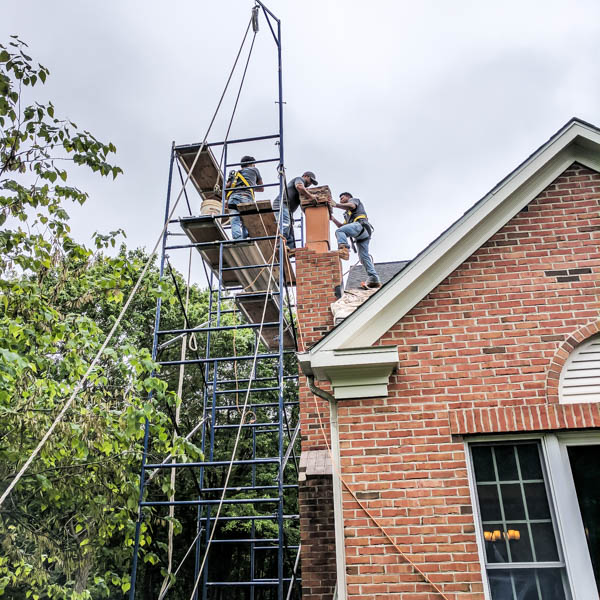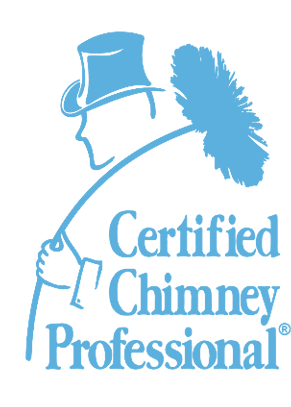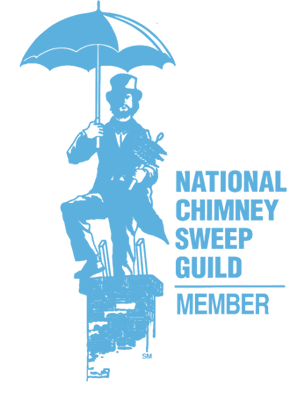Why Is My Chimney Starting To Lean?
If you recently noticed your chimney is starting to lean to the left or right, you know you have a serious problem that must be addressed immediately. A leaning masonry chimney can easily collapse, turning its bricks into deadly missiles. You may also be wondering- why is my chimney starting to lean? There are a number of reasons it has begun to lean. Here are a few of the causes of a leaning chimney.
Reasons for a Leaning Chimney
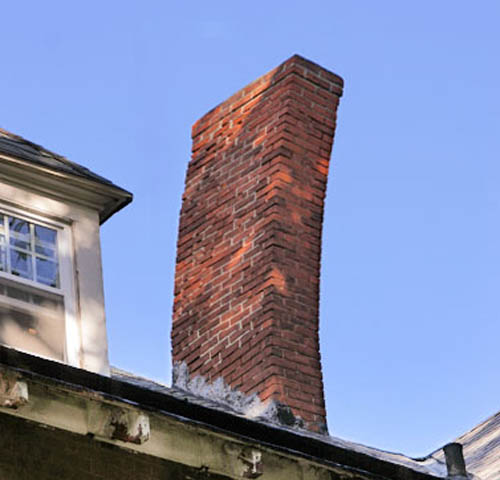 Foundation Settling or Shifting
Foundation Settling or Shifting
The most common reason for a leaning chimney is the settling or shifting of the foundation. Over time, the ground beneath the foundation can compact, erode, or be subjected to hydrostatic pressure, causing the foundation to settle unevenly. As a result, the chimney, which is often built on a separate foundation from the rest of the house, can start to lean.
Poor Construction or Design
Another potential cause for a leaning chimney is poor construction or design. If a chimney is not properly constructed, it may lack the necessary structural support to maintain its vertical alignment. Inadequate or improper use of materials and insufficient anchoring can lead to a weakened structure that starts to lean over time.
Soil Conditions
The soil type which a chimney's foundation is built upon can significantly impact its stability. Expansive soils, such as clay, can expand and contract based on moisture content, causing the chimney's foundation to shift and the chimney to lean. Similarly, soils with poor drainage or low bearing capacity may not provide adequate support, leading to foundation settling and leaning chimneys.
Water Damage
Water infiltration can cause severe damage to a chimney's structure, including its foundation. Water can seep into the mortar joints, causing them to deteriorate and weaken the chimney's structural integrity. Additionally, water infiltration can exacerbate soil erosion or contribute to the expansion and contraction of expansive soils, both of which can lead to a leaning chimney.
Tree Roots
The growth of tree roots near a chimney can contribute to its leaning. As roots grow, they can push against the chimney's foundation, causing it to shift and ultimately leading to a leaning chimney. Tree roots can also absorb moisture from the soil, causing it to dry out and contract, contributing to foundation settling.
Freeze-Thaw Cycles
In areas that experience freezing temperatures, the freeze-thaw cycles can also contribute to a leaning chimney. When water seeps into the mortar joints or the foundation and freezes, it expands and can cause cracking and displacement of the structure. Repeated freezing and thawing cycles can exacerbate this problem over time, leading to a leaning chimney.
Promptly addressing a leaning chimney is crucial to preventing further damage to the chimney and the house.
Repairs For a Leaning Chimney
As you can imagine, fixing a leaning chimney is a complicated process that requires a precise solution. After an inspection of the chimney, one of three things will happen:
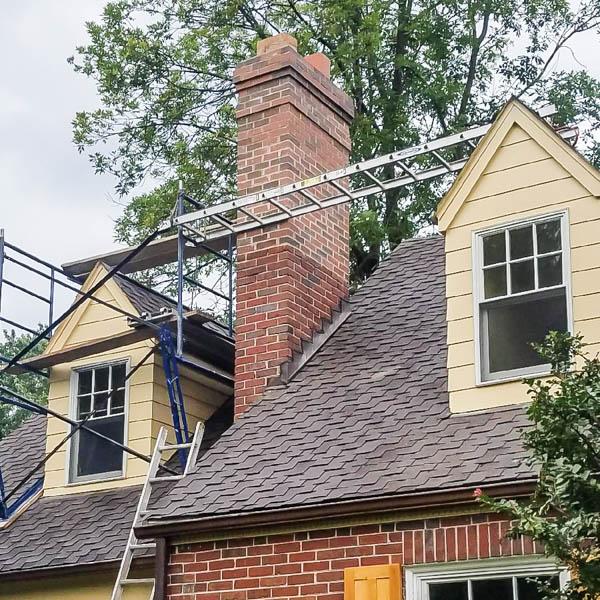
Spot Repair
Spot repair takes place when only the top of the chimney is leaning and is fixed by reconstructing the top of the chimney.
Foundation Repair
When a failing foundation is the cause of a leaning chimney, repairing the foundation will rectify the problem.
Demolition and Reconstruction
When a leaning chimney is too far gone for repair, it will be torn down and rebuilt from the ground up.
Bethesda Chimney Can Repair Your Leaning Chimney
If you're in the greater Washington DC area, Northeast Virginia, or Montgomery County and your chimney is leaning, call us today at 202-217-1767 (DC), 301-969-4444 (MD), or 703-935-4444 (VA) or fill out our easy contact form. A chimney expert will be happy to schedule a time for our qualified and experienced chimney sweeps to inspect your chimney. They will be able to assess how damaged your chimney is and make a recommendation for repair. Don't wait until your chimney collapses; get in touch right away.

